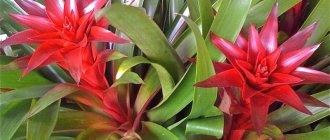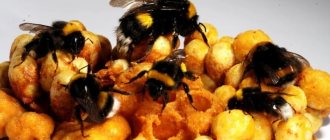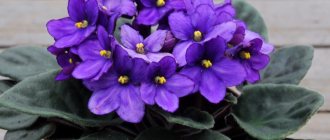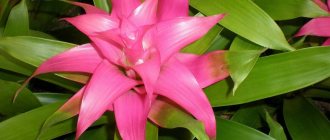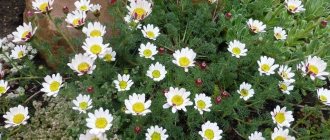Signs of the lily family
Lily plants are grown in gardens, gardens or summer cottages. Some cultivated species feel great as indoor potted crops. They delight their owners with unusually beautiful and abundant flowering.
lily family
The main sign of belonging is the presence of a simple perianth. It consists of petals and a corolla; each species lacks sepals. The structure of lilies suggests the presence of a dense main stem or the formation of a leaf rosette at the soil surface.
Veins clearly appear on the leaves. They are arranged in an arcuate or linear manner. The type of venation is a characteristic feature. It is usually used to distinguish members of the family from similar species of the daylily genus.
Those specimens that are grown by seed are characterized by the presence of a fibrous root system. Most onion representatives are propagated and grown by division. Bulbs are either perennial or annual. The monocot class to which plants belong determines the presence of a single cotyledon located in the embryo. This feature is also inherent in families such as cereals.
Reference! Among the main types of lilies there are herbs, shrubs, and low trees.
Hosta, Funkia - Hosta Tratt. (Funkia Spreng.)
LILI FAMILY – LILIACEAE JUSS.
About 3,700 species of 250 genera of herbaceous, less often tree-like plants. In culture there are representatives of about 100 genera.
Genus Hosta, Funkia - Hosta T g at t. ( F unkia S r e n g.)
Named in honor of the Austrian physician and botanist N. Host (1761 -1834). There are about 40 species of herbaceous perennial plants in the genus, including species of cultivated origin. There are 2 types in the USSR. They grow in the temperate zone of East Asia (China, Japan, the Korean Peninsula), and in the Far East. There are more than 15 species in culture. Read more about Hosta, Funkia - Hosta Tratt. (Funkia Spreng.) ...
Spreading
Lilies are the oldest species of the genus. Snow-white buds are first found on Cretan frescoes, starting in the second half of the 18th century. BC. The first written description was given by the ancient Romans. The Romans spread representatives of the family throughout the conquered countries of Europe.
By the beginning of the Middle Ages, Europeans discovered the medicinal properties of lilies. A little later, they began to be grown throughout the world as ornamental domesticated crops.
In the modern world, lilies can be found in the temperate regions of Eurasia and in North America. Some species thrive in the subtropics of the African continent and can be found in semi-deserts and high mountain ranges.
Tulip - Tulipa L.
LILI FAMILY – LILIACEAE JUSS.
About 3,700 species of 250 genera of herbaceous, less often tree-like plants. In culture there are representatives of about 100 genera.
Genus Tulip - Tulipa L. _
The name of the genus is Persian, translated as “turban”, “turban” and is given by the shape of the flowers, reminiscent of a turban.
The genus includes about 140 species of herbaceous perennial bulbous plants, distributed from the Mediterranean and the Far East and Japan, from Sweden to North Africa, mainly in Central Asia and Kazakhstan, the Caucasus, and Western Asia. Read more about Tulip - Tulipa L. ...
Classification
Diversity requires precise classification and systematization. The taxonomy has been revised several times by scientists. To date, researchers have identified 4 main tribes. Tribes are a separate rank of taxonomic type in biology, which allows you to organize a hierarchical system.
Kinds
The enumeration of species varieties is complicated by the huge number of emerging hybrids. Today there are 600 - 700 species. The most popular of them are 20-30 representatives.
The species categories include Asian hybrid varieties, candidums, American varieties, tubular oriental hybrids, as well as interspecific types, which are designated by the letters of their Latin names.
Reference! The type of lilies deserves special mention. Snow-white lilies rightfully occupy one of the dominant places in the category of the most popular garden plants.
Childbirth
The genera lists were updated in 2006 by scientists at the Royal Botanic Gardens. The list includes: calochontus, goose onion, hazel grouse, lily, tulip, cardiocrinum, kandyk, tricirtis, hyacinth.
Types and varieties of indoor lilies
There are about 300 species of lilies in the world, which are divided into main groups:
- Cupped. Petals of this type are presented in the shape of a bowl - wide open. Cup-shaped varieties include: gilded lily, Empress Lily of China, Grand Commander.
- Funnel-shaped. The petals are tightly packed and form a tube. Funnel-shaped lilies include Long-flowered, Regal, Royal Gold, as well as a dozen hybrids that differ in a wide variety of colors: from light yellow to bright orange shades. This species includes the most planted lily - the indoor lily.
- Fez-shaped. The flower consists of bent petals. Fez-shaped plants have a low stem and small flower diameter. Lilies such as Dwarf lilies, beautiful species and L. Citronella belong to the fez-shaped lilies.
In addition to the above varieties, there are Asian, American, Oriental lilies, as well as Tubular hybrids, Candidum hybrids, La hybrids, etc.
Each species has its own characteristics that are responsible for resistance to low temperatures and other unpleasant weather conditions.
Structure, flower formula
When describing, special attention is paid to the structure and formula of the buds. A special feature is the formation of a simple perianth without the presence of sepals. The corolla consists of 6 petals. Most often they are arranged in two layers. Each of the petals has a stamen, the pistil is located in the center. The formula is written as follows: perianth (3 + 3), stamens (3 + 3), pistil (1).
Fetus
Planting seeds or grounding bulbs is how the lily family is propagated. The fruit of an adult plant is a three-membered capsule, which cracks into 3 parts after full ripening.
Individual representatives form a berry. This is a variety of fruit that has many seeds covered with a thick leathery epicardium. Each gardener can collect the seeds independently. After this, you can plant them and get beautiful specimens.
Inflorescence
Bright representatives of the family form large single flowers. If the buds are small, then the inflorescence of lilies is formed like a brush or umbrella. An example of the formation of a raceme inflorescence is the flowering of lily of the valley. The umbrella-shaped inflorescences include the inflorescences of goose onions.
Chionodoxa - Chionodoxa Boiss.
LILI FAMILY – LILIACEAE JUSS.
About 3,700 species of 250 genera of herbaceous, less often tree-like plants. In culture there are representatives of about 100 genera.
Chionodoxa genus - Chionodoxa B o i s s .
The names come from the Greek words chion - “snow” and doxa - “glory”, “pride”, due to the early appearance of plants, often from under the snow. The genus includes 5-6 species of herbaceous bulbous plants growing on the islands of the Mediterranean Sea and in Asia Minor. All species and their varieties have been introduced into culture and are very decorative. The two most commonly used species are Chionodoxa gigantea and Chionodoxa Lucilia, which grow well in open sunny places and are suitable for forcing. Propagated by seeds and baby bulbs. Read more about Chionodoxa - Chionodoxa Boiss. ...
Representatives of the lily family
Photos of plants belonging to the lily family amaze with their variety of shapes, shades and sizes. When flowering, the buds emit a pleasant aroma. Bees love them very much because of the large amount of amber nectar.
Another feature that collectors appreciate is the variety of colors when forming buds. Among the indoor varieties that are often found in houses or apartments on window sills, the following representatives are noted: chlorophytum, lagaria, haworthia.
Chlorophytum is an indoor herbaceous species. It forms narrow leaf blades of a rich green hue, as well as mustaches by which it can be easily recognized. The mustache hangs from the pot. As they grow, additional green formations form at the tips. Chlorophytum periodically blooms with white buds. Every gardener looks forward to this moment with special impatience.
Havoratia is an indoor potted plant that resembles aloe in appearance. Havorathia is known as an unpretentious representative. No special skills are required to care for it; it blooms with small white flowers every year.
Lachenalia is a luxurious perennial with beautiful yellow flowers shaped like a bell. Lachenalia attracts attention, it can decorate any interior and is in particular demand among flower growers and collectors.
The main garden representatives of the family are lilies, tulips and hyacinths. These are one of the most luxurious ornamental perennials, the care of which requires special attention. Hyacinths have a variety of colors and are planted in garden plots for decoration or to delimit zones. They form buds of bright colors. This is why they are often used in landscaping.
Lilies are favorites in any garden. Their flowering, characterized by a strong, memorable aroma, leaves no one indifferent. Lilies are often used to create flower arrangements; they are in demand among decorators and are grown for cutting and forming expensive bouquets.
Tulips are a special species that does not need additional introduction. Different types and varieties of tulips are grown commercially for sale. Breeders all over the world are working to create a special class with unusual and bright colors.
Diseases and pests
Most often, domestic lilies are susceptible to fungal diseases. Basically, such problems appear when owners are too zealous with watering. In the vast majority of cases, the indoor lily is affected by gray rot. The presence of such a disease is indicated by mold spots on the leaves and stem of the flower. If gray rot is detected, all damaged parts of the plant should be removed. And healthy areas are sprayed with a solution of copper sulfate.
Bulbs can also be affected by a similar fungus - soft rot. This disease is reflected on the tubers in the form of dark, watery spots. At the same time, the bulb becomes soft and covered with mold. A specimen that is too damaged cannot be saved. In case of partial damage, it is possible to restore the viability of the culture. To do this, you need to mix coal with sulfur, remove the onion from the ground and treat it with this mixture. Then put it in a horn solution for half an hour, pull it out and let it dry.
Also, the indoor lily plant can be susceptible to a disease such as mosaic. The first signs appear in the form of clearing along the veins. In the future, such spots become whitish or yellow. Their number is increasing. And as a result, the entire sheet disappears. Occurs due to damage to chloroplasts and destruction of chlorophyll. Tissues are affected at the cellular level. Infection occurs as a result of the transfer of a virus from one plant to another. For example, after using the same tools without disinfection. There are no drugs against mosaic. When this disease occurs, the plant is destroyed.
But complex diseases in indoor lilies, the photos and names of which are presented in this article, rarely occur. Most often, improper care leads to problems with cultivation. Therefore, if you notice any aesthetic deviations in the development of the plant, simply adjust the regime.
Some care tips:
- If the bulb begins to rot, change the soil and reduce the amount of watering. Lack or little drainage can also lead to similar problems.
- If the plant has turned yellow or dull, it may not have enough moisture. In this case, the number of irrigations should be increased.
- At home, lilies are rarely affected by insects. But, if this does happen, treat the plant with a special preparation.
Growing and caring for indoor lilies is not difficult and interesting. With proper planting and care, the plant will delight you with beautiful green leaves and large bright buds.
Lily family: examples
The listing of species and genera is not limited to listing such famous flowers as tulips, lilies of the valley, hyacinths, and lilies. Among the representatives of the family in nature there are wild, medicinal, and also poisonous plants that can cause significant harm to human health.
Medicinal
Plants of the lily family are often used for medicinal purposes. Pharmacological properties make it possible to prepare drugs from them to treat diseases or alleviate various symptoms.
May lily of the valley is a perennial plant that has long been used as a remedy that has a general sedative effect. Leaf squeezes normalize blood flow if taken regularly. This becomes possible due to the fact that lily of the valley contains an increased amount of cardiac glycoside.
The glycoside is extracted from lily of the valley by extraction and fermentation. It is used as a sedative and diuretic. Infusions and decoctions are prepared from lily of the valley, and also mixtures are made, combining lily of the valley, valerian and hawthorn.
Colchicum splendid is a small purple flower that grows from corms. Colchicum helps delay the division of the cell nucleus. This property is in demand in the treatment of various forms of skin cancer, as well as in eliminating the symptoms of inflammatory diseases of the stomach. Infusions and decoctions prepared in a special way are taken internally. When diagnosing gout, special means are prepared from colchicum, which are used to make lotions.
Wild growing
A popular wild plant is considered to be grass that appears in forest clearings in early spring. Goose onion is a herb with narrow light green leaves 10-15 cm high, which begins to germinate in the spring simultaneously with the melting of snow. Small bright yellow flowers with six petals form at the tips of the stems.
Later, in oak forests or thickets of bushes, you can see the flowering of the Siberian blueberry. This is a grass with small blue buds, which is characterized by rapid flowering.
Cultural decorative
The most spectacular group in terms of decorative properties is the group of representatives of cultivated species. Flowers come in a variety of shapes and shades.
Hyacinth – magnificent hyacinth grows up to 30 cm in height. The buds are formed on a dense stem, their number reaches 15-40 pieces. The buds are collected in racemose inflorescences. The shade of the petals can be very different: from white or blue to pink and yellow.
Blooming hyacinth spreads a strong aroma around itself. With proper care, it begins to bloom in the spring, after the air temperature reaches + 15 degrees. Hyacinth flowering lasts about 15-20 days. To decorate the area, experienced flower growers use the technique of fan planting varieties of different flowering periods.
Tiger lily is a bulbous perennial with tough, dense stems on which racemose-shaped inflorescences are formed. Inflorescences are formed from large buds. The number of buds can reach 10 pieces on one bush.
The color of tiger specimens can be orange, pink or purple. A peculiarity of this representative is the presence of dark dots over the entire surface of the petal. This coloring resembles that of a tiger, which is why the variety has this name.
Tiger lily is planted to highlight the center of decorative flower beds. If a flower is planted along one line, it will look like a hedge. With the help of the variety, they delimit space and highlight garden paths. When planting in mixborders, tiger varieties are planted in the background to create a luxurious background for other low-growing plants. Tiger varieties are good in single plantings. They are able to decorate any area and go well with silva and petunias and pipergoniums.
Poisonous
Lilies containing toxic substances are a special group that includes perennials. Most often, the fruits of a poisonous plant contain saponins that are harmful to human health.
Crow's eye is a perennial up to 20 cm high. The leaves of raven's eye are colored dull green. The leaf plates are elongated and pointed at the ends. After the faded white flowers fade, poisonous berries of a bluish-black color form on the stems. Animals avoid the raven's eye.
Maksimovich's kupena is a perennial herb that, according to its external description, resembles lily of the valley. Small white drop-shaped flowers form on light green stems. After flowering, a blue-black fruit appears in place of the perianth. The leaves and buds of kupena contain an increased amount of harmful glycosides.
Hyacinth: home care (video)
| Genus | Growth conditions | Varieties |
| Kandyk (Eruthronium) | Propagated by seeds or baby bulbs in the fall. Grows in any flowery, well-moistened soil. Requires shading. During the period of active growth, the air temperature should be at least 20º C | Common Kandyk |
| Tulip (Tulipa) | The bulbs are planted in a pot with flower soil and kept in the dark at 5º C for 6 to 10 weeks. After the shoots grow to 3–5 cm, the pots are kept for several days at 10º C in a shady place, then transferred to the window, gradually accustoming the plant to light | Early-flowering, low-growing hybrids are best suited. Simple early ones: Brilliant Star, Princess Margaret. Terry early: Peach Blossom, Scarlet Cardinal. Darwin's tulip: Apeldoorn, Sunkist. Lily tulips: West Point, Alladin. T. Kaufman: The First, Stresa. T. Greig: Plaisir |
| Lily (Lilium) | Requires space and cool nights. In autumn, the bulbs are planted in pots with a diameter of 15 cm, sprinkled with a 4–5 cm layer of soil and kept in a cool, dark place. After germination, bright, diffused light is needed. The soil is kept moist, watered abundantly during the growth period and the leaves are sprayed | L. gilded, L. beautiful, L. empress of China, L. long-flowered. Hybrids Mid-Centuru, Fiesta, L.Golden Splendor, L. dwarf |
| Hyacinth (Hiacintus L.) | In indoor conditions, the bulbs are planted in pots and grown in the same way as tulips. Hyacinths can be grown in water - to do this, place the bulb in a vessel with water so that it touches the water only with the bottom. Lily bulbous plants lose leaves during dormancy | Any varieties are suitable for forcing indoors |
The importance of the lily family in human life
What the lily family is is well known to every schoolchild from a botany course. Subspecies and genera of this category are widespread. Man uses food crops for cultivation on an industrial scale. Such crops include asparagus and saffron. Asparagus is often mistaken for being a member of the cereal family, but this is not true. This plant is of economic importance to humans.
An important place in the structure is occupied by a group of decorative representatives. It is difficult to imagine the floriculture community without varietal lilies, hybrid tulips and hyacinths. With their help, they decorate space and are also used to create luxurious flower arrangements.
Medicinal representatives occupy a significant place. The medicinal properties of parts of the stem, root or bud are used by official medicine in the preparation of preparations based on plant raw materials. Since ancient times, parts of lily of the valley, colchicum, and onion have been grown to create medicines according to folk recipes. These recipes are part of the heritage, they are passed down from generation to generation and are used to treat diseases.
Reproduction
One of the methods of vegetative propagation of lilies is propagation by scales of bulbs. Almost all lilies can be propagated by scales, with the exception of Lilium callosum
,
Lilium cernum
,
Lilium pulchellum
, which have very small bulbs, from which it is difficult to separate more than 2-3 scales. Recommended time for propagation by scales: during flowering or immediately after flowering. But in practice, lilies are most often propagated by scales of bulbs in the fall (September, October), when the growing season ends and replanting is carried out. Usually the scales are broken off to half the bulb, and if necessary, they are pinched off to the end, and the bottom itself is used as a cutting. It is recommended to thoroughly sprinkle the fracture site with charcoal powder or TMDT powder. From healthy outer scales, 2 or 3 baby bulbs develop. Lily scales are planted in seedling boxes in a soil mixture (2 parts leaf humus, 2 parts peat and 1 part gravel) 2-3 cm thick. A 3-4 cm layer of gravel is poured on top of this mixture. The scales are immersed 2/3 into the ground. The bottom end of the scale should be in the gravel.
Germination of scales is carried out at a temperature of 20-25 ° C. The substrate should be slightly damp. It is recommended to cover the above-ground part of the bulbs with fine sifted peat or sphagnum. No light is needed until the first leaves appear. Baby bulbs on the scales are formed in 4-12 weeks, depending on the type of lily, or depending on the origin of the variety. At low temperatures, development may be delayed by up to 20 weeks. After the formation of leaves, the baby bulbs are separated from the scales and planted in boxes with a 6-8 centimeter layer of soil. Well-preserved scales can be reused after separation of the baby bulbs. Lilies propagated by bulb scales bloom in the second or third year.
Pushkinia - Puschkinia Adans.
LILI FAMILY - LI LIACEAE JUSS .
About 3,700 species of 250 genera of herbaceous, less often tree-like plants. In culture there are representatives of about 100 genera.
Genus Pushkinia - Puschkinia Adans .
Named after the Russian naturalist A. A. Musin-Pushkin. There are 2 species of herbaceous bulbous plants in the genus, growing in the Caucasus, Asia Minor and Western Asia. Used for planting in rock gardens, in group plantings in front of bushes, on ridges. Unpretentious, prefer open sunny places. Propagated by seeds and bulbs, replanted after 5-7 years. In our country, Pushkinia proleca is widely used in open ground floriculture. Read more about Pushkinia - Puschkinia Adans. ...
Ornithogalum, Ornithogalum L.
LILI FAMILY - LI LIACEAE JUSS .
About 3,700 species of 250 genera of herbaceous, less often tree-like plants. In culture there are representatives of about 100 genera.
Genus Ornithogalum, Ornithogalum L.
The name translated from Greek means “bird's milk”. The genus includes 150 species of herbaceous bulbous plants growing in the subtropical and temperate zones of Europe, Asia and Africa. There are 27 species in the USSR. More than 15 species are used in floriculture. Undemanding to soil, easily propagated by baby bulbs. Read more about Ornithogalum, Ornithogalum L. ...

